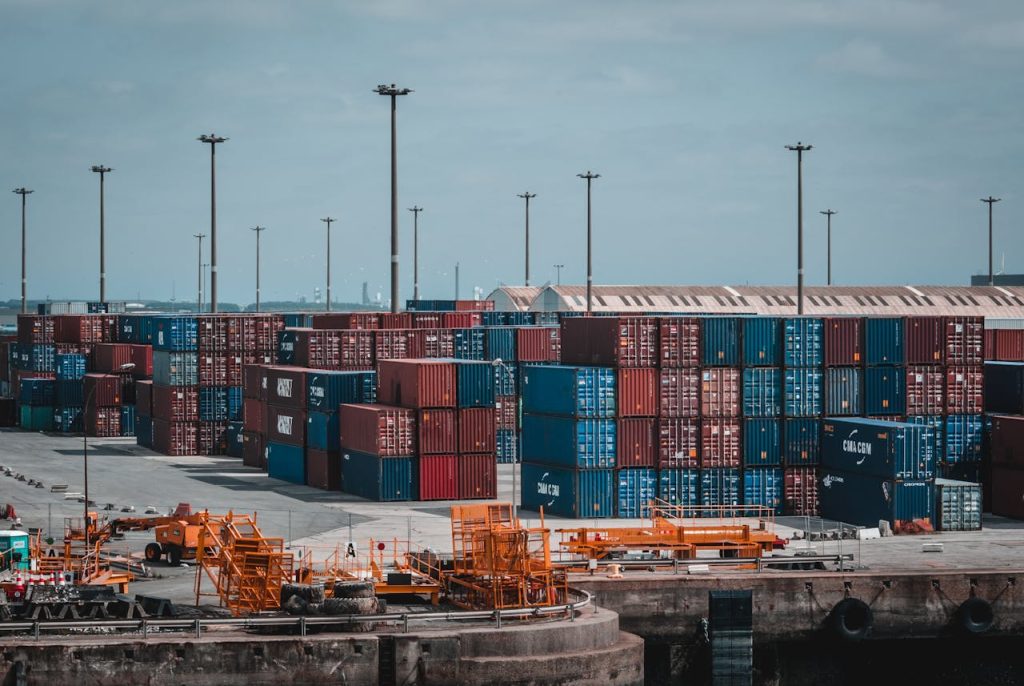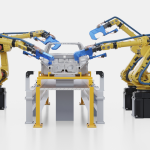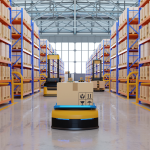Nearshoring is no longer just a strategic response to global disruption, it’s becoming a foundational element of modern supply chain design. In 2025, leading manufacturers are shifting their focus from location to capability, using regional hubs not only to shorten lead times but to drive automation, resilience, and smarter supplier integration.
This is the first in a three-part series exploring how nearshoring is evolving in 2025, starting with the companies leading the charge.
Nearshoring as a Platform for Performance
In 2025, nearshoring has matured into a decisive strategy among global enterprises that are less focused on cutting miles and more focused on maximizing resilience and performance. Rather than simply relocating production, companies like Apple, Nvidia, and Foxconn are rethinking what their supply chains can and should do, regionally and globally.
Industry giants such as Apple and Nvidia are leading a quiet transformation in the industrial landscape. Apple is investing in a 250,000-square-foot AI server manufacturing facility, due to open in 2026. Nvidia, not far behind, is building a high-capacity AI supercomputer plant set to be operational within 12 to 15 months. These facilities mark a broader trend: reshoring is becoming about capability, not just closeness.
Just south of the U.S. border, Foxconn, Nvidia’s manufacturing partner, is constructing what will be the world’s largest AI server factory in Guadalajara, Mexico. The decision isn’t purely geopolitical. It reflects a deliberate shift toward regionalized production models that balance speed, technical complexity, and reduced exposure to volatile trade environments.
Beyond the Move: Building Smarter, Self-Contained Supply Chains
What separates today’s nearshoring strategies from the initial wave of relocations is a clear focus on operational risk mitigation, not just physical relocation. Manufacturers are layering in tools like digital twins, AI-driven scenario planning, and next-gen Manufacturing Execution Systems (MES) to bring transparency and agility to the network.
In Houston, Nvidia’s factory will reportedly employ advanced manufacturing execution systems (MES) capable of real-time feedback loops across planning, production, and logistics. These systems are often paired with digital twin technology, enabling scenario modeling to identify potential bottlenecks or disruptions before they materialize. In essence, these factories are as much data centers as they are production sites.
Foxconn’s Mexico facility, too, is built with scalability and supplier integration in mind. The company is not replicating its Asian supply web in North America, instead, it’s building a regional network of component suppliers, logistics providers, and maintenance specialists that can respond dynamically to shifts in demand and technology requirements. This is especially critical in the AI server space, where component lifecycles and power densities are advancing rapidly.
Managing Complexity: The Art of the Dual-Source Strategy
For many supply chain leaders, the most pressing question isn’t whether to nearshore – it’s how to manage the complexity that comes with splitting supplier networks between regions. Dual-sourcing models, where critical components are still sourced from Asia but final assembly occurs closer to the end market, are becoming increasingly popular.
But this setup only works if companies can orchestrate both legs of the supply chain in harmony. That means investing in transportation visibility platforms, AI-led inventory balancing, and predictive analytics that can recommend where and when to hold stock without inflating working capital. Apple, for instance, has continued to source certain precision components from Asia while developing flexible routing and buffer strategies to support final assembly closer to home.
What emerges is a nearshoring strategy that is less about abandoning global suppliers and more about insulating against their fragility. Companies are learning to operate in both worlds — optimizing for regional responsiveness while maintaining access to legacy capabilities abroad.
Designing for Capability, Not Just Geography
The evolution of nearshoring reflects a broader shift in supply chain thinking, away from reactive moves toward more deliberate network design. What distinguishes the current wave of investment is not location alone, but how these networks are being embedded in automation, digital oversight, and smarter sourcing boundaries.
This is not about abandoning global supply chains, but about building regional capabilities that serve as strategic complements. The companies leading this transition are approaching nearshoring as an operating model, not a one-time move.







